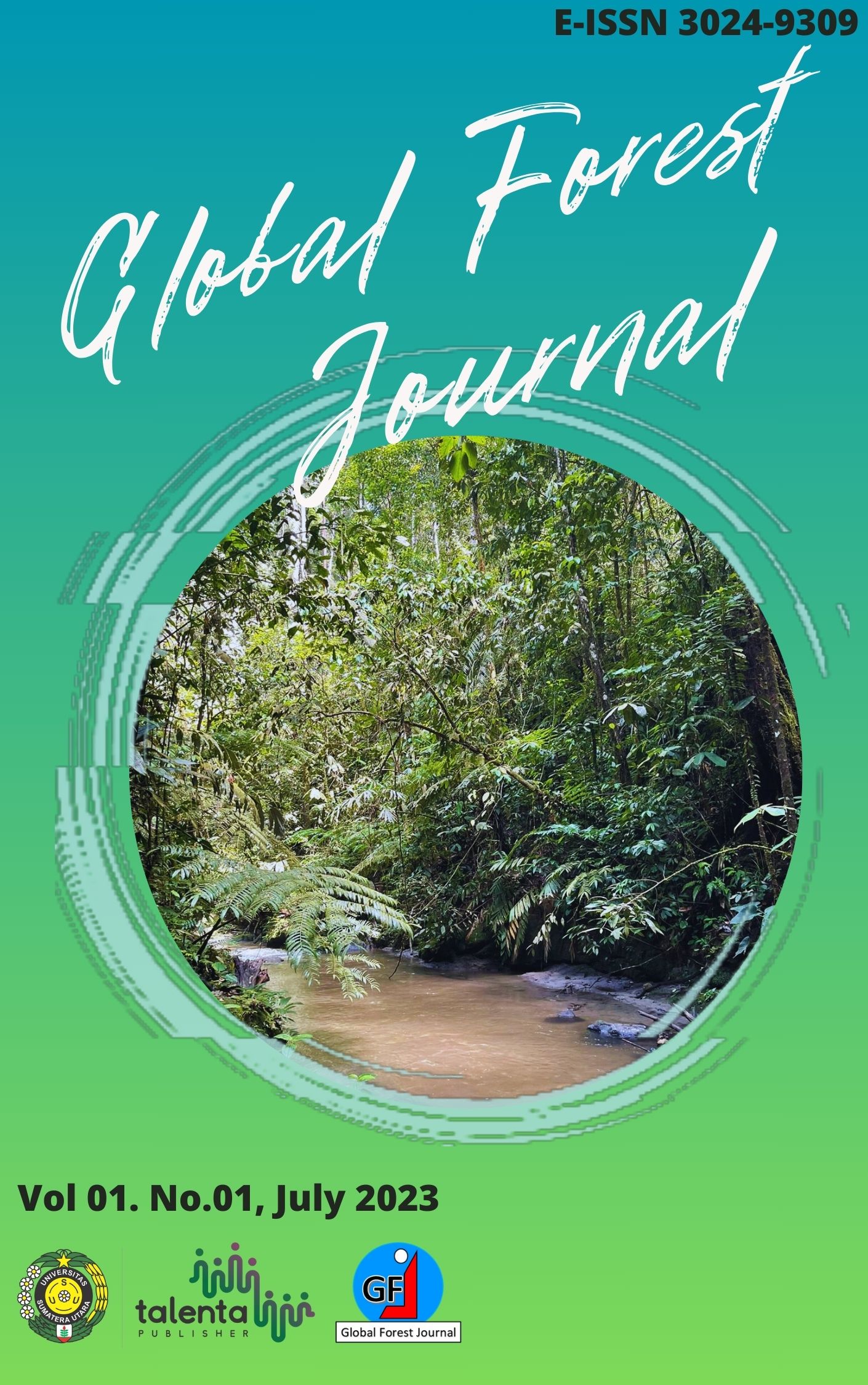Panel products made of oil palm trunk bagasse (OPTB) and MMA (Methyl methacrylate)-styrofoam binder
DOI:
https://doi.org/10.32734/gfj.v1i01.13245Keywords:
MMA, Oil Palm Trunk Bagasse, Particleboard, StyrofoamAbstract
The waste product left over from pressing or extracting oil palm trunk (OPT) for sugar purposes is known as oil palm trunk bagasse (OPTB). This residue contains mainly vascular bundles and small amount of parenchyma. These materials are potentially utilized for making panel products such as particleboard (OPTBparticleboard). Objective of this study was to evaluate physical mechanical properties of OPTB-particleboard. For preserving the durability, this work was intended to apply 15% mixture of methyl methacrylate (MMA) cured with Styrofoam as the binder with a ratio (w/w) of 3:1. OPTB-particleboard was made according to the Japanese Industrial Standard (JIS A5908: 2003) with a target density of 0.75 g/cm3 and dimensions of 25 x 25 x 1 cm3. Hot pressing was a condition set at a pressure of 30 kg/cm2 and a temperature of 160 °C for 15 minutes. Physical and mechanical properties were tested according to JIS A 5908:2003 standard. The results showed that physical and mechanical properties of the OPTB-particleboard did not meet the standard.
The characteristics of OPTB still easily absorb water even though MMA-Styrofoam should hinder water ingress. Additionally, the poor quality of the OPTB-particleboard was primarily due to the binder's inadequate composition. Optimum values reached when IB, MOR, and MOE were 0.026 MPa, 6.69 MPa, and 892 MPa, respectively. Based on the analysis of variance, it can be concluded that there is no influence on the bottom, middle and upper parts of the origin of the OPTB except for the MOR.
Downloads
Downloads
Published
Issue
Section
License
Copyright (c) 2023 Global Forest Journal

This work is licensed under a Creative Commons Attribution-ShareAlike 4.0 International License.












